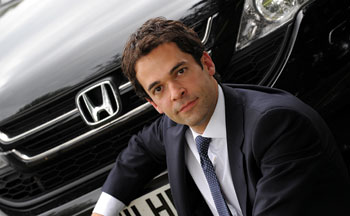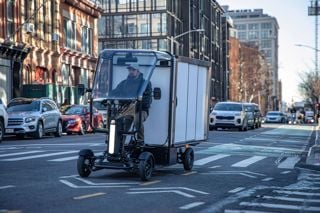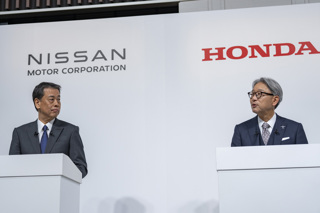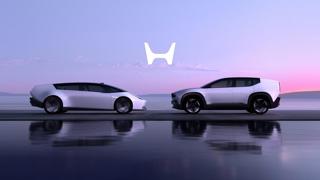It’s been a tough few years in fleet for Honda. Deprived of a diesel engine for the Civic since the end of 2010 (the Euro IV unit did not meet the latest European regulations) and hit hard by the Japanese earthquake and tsunami, which affected supply of Jazz and led to a two-month delay on opening orders for the new Accord, the company’s position has been steadily eroding.
From a fleet high of 39,150 in 2008 (3.5% market share), sales had fallen to 23,000 two years later (2.4%). They are expected to drop further, to 20,500, by the end of 2011.
To compound the problems, Honda was without a corporate operations manager for the first three months of this year.
On paper, then, it appears not to be the greatest career move to pick up those reins, particularly for someone that spent the previous six years at fleet favourite Volkswagen.
So why has Ed Hummel turned his back on a flyaway success to tackle the plight at Honda?
“The challenge of leading a fleet team and creating a strategy for growth,” comes the succinct reply.
That Honda is based just minutes from his home was also part of the appeal.
Hummel swats away a glib suggestion that the interview consisted of a role reversal, with Honda bosses selling to him why he should consider the job rather than him selling his attributes to them, stressing: “It’s a strong brand with some fantastic product coming through. And I’ve been given a blank canvas to work with.”
He has spent the past four months adding colour to the canvas, talking to fleets, dealers and staff to create Honda’s fleet sales strategy for the next three years.
Here are the headline figures: a rise in fleet sales to 30,000 units for a 3% share of the sector and a move from 2nd to 1st in the JD Power customer satisfaction survey.
For Honda, growth in fleet means more sales to leasing companies, corporates and SMEs, described by Hummel as “true fleet”. What’s not included is daily rental, Motability and captives.
Hummel is critical of the credence given to the official fleet registration figures, which are heavily weighted towards short-term activity – he claims just 450,000 of the one million fleet sales are company cars – and points out that Honda does no daily rental business.
While Honda’s share of total fleet sales is 2.4%, placing it 10th, its share of ‘true fleet’ is 3.64%, putting it one place higher.
The route to 2014 encompasses four tactics of interest to fleets:
- Closer relationships with leasing companies
- Maximising time with end customers
- Empowering fleet dealers
- Creating a great ownership experience
Hummel looks at each in turn.
“We have to make it easier for leasing companies to recommend and sell Honda as a preferred brand to fleets,” he says.
“It’s about looking at the process from launch to aftersales and is our medium-term project.”
More immediately, Honda is getting closer to the 15 leasing companies responsible for 80% of its fleet volume. A Honda representative will be based with them to assist with deals, answer questions and improve the marketing materials.
Part of the plan is to capture more aftersales business in the dealer network. It involves demonstrating the benefits to leasing companies, such as free wash and vac, guaranteed courtesy car and VIP treatment on lead times, which will be set out in a Honda Promise.
All are currently offered; it’s about promoting them better and, in some cases, improving the service, such as speeding up response and repair times and ensuring greater consistency throughout the network.
“It’s not revolutionary; it’s about being sharper at what we are doing,” says Hummel.
“This includes pricing comparisons against the independents. Our labour rate might be higher, but we are quicker time-wise. Pricing out jobs is a quick win for us.”
Complementing the leasing company work is a move to get in front of end-user fleets to sell the benefits of Honda cars. The intention is to grow the customer base – Honda currently has 1,912 customers and is looking to double this number.
It is identifying the biggest prospects in each region under the ‘Focus 50’ project to ascertain fleet’s current suppliers and when tenders are due, and to revisit companies that have previously rejected Honda, usually because of CO2 emissions.


















Login to comment
Comments
No comments have been made yet.